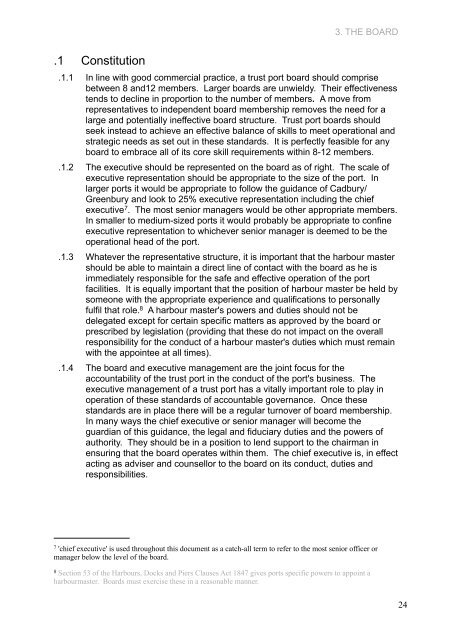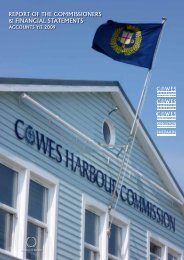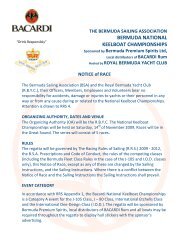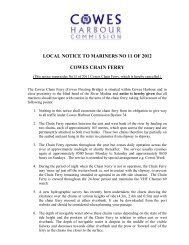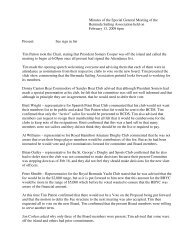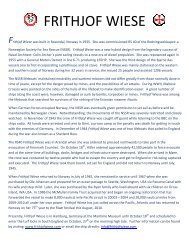Modernising Trust Ports 2nd Edition.pdf - SailingNetworks
Modernising Trust Ports 2nd Edition.pdf - SailingNetworks
Modernising Trust Ports 2nd Edition.pdf - SailingNetworks
You also want an ePaper? Increase the reach of your titles
YUMPU automatically turns print PDFs into web optimized ePapers that Google loves.
3. THE BOARD.1 Constitution.1.1 In line with good commercial practice, a trust port board should comprisebetween 8 and12 members. Larger boards are unwieldy. Their effectivenesstends to decline in proportion to the number of members. A move fromrepresentatives to independent board membership removes the need for alarge and potentially ineffective board structure. <strong>Trust</strong> port boards shouldseek instead to achieve an effective balance of skills to meet operational andstrategic needs as set out in these standards. It is perfectly feasible for anyboard to embrace all of its core skill requirements within 8-12 members..1.2 The executive should be represented on the board as of right. The scale ofexecutive representation should be appropriate to the size of the port. Inlarger ports it would be appropriate to follow the guidance of Cadbury/Greenbury and look to 25% executive representation including the chiefexecutive 7 . The most senior managers would be other appropriate members.In smaller to medium-sized ports it would probably be appropriate to confineexecutive representation to whichever senior manager is deemed to be theoperational head of the port..1.3 Whatever the representative structure, it is important that the harbour mastershould be able to maintain a direct line of contact with the board as he isimmediately responsible for the safe and effective operation of the portfacilities. It is equally important that the position of harbour master be held bysomeone with the appropriate experience and qualifications to personallyfulfil that role. 8 A harbour master's powers and duties should not bedelegated except for certain specific matters as approved by the board orprescribed by legislation (providing that these do not impact on the overallresponsibility for the conduct of a harbour master's duties which must remainwith the appointee at all times)..1.4 The board and executive management are the joint focus for theaccountability of the trust port in the conduct of the port's business. Theexecutive management of a trust port has a vitally important role to play inoperation of these standards of accountable governance. Once thesestandards are in place there will be a regular turnover of board membership.In many ways the chief executive or senior manager will become theguardian of this guidance, the legal and fiduciary duties and the powers ofauthority. They should be in a position to lend support to the chairman inensuring that the board operates within them. The chief executive is, in effectacting as adviser and counsellor to the board on its conduct, duties andresponsibilities.7'chief executive' is used throughout this document as a catch-all term to refer to the most senior officer ormanager below the level of the board.8Section 53 of the Harbours, Docks and Piers Clauses Act 1847 gives ports specific powers to appoint aharbourmaster. Boards must exercise these in a reasonable manner.24


